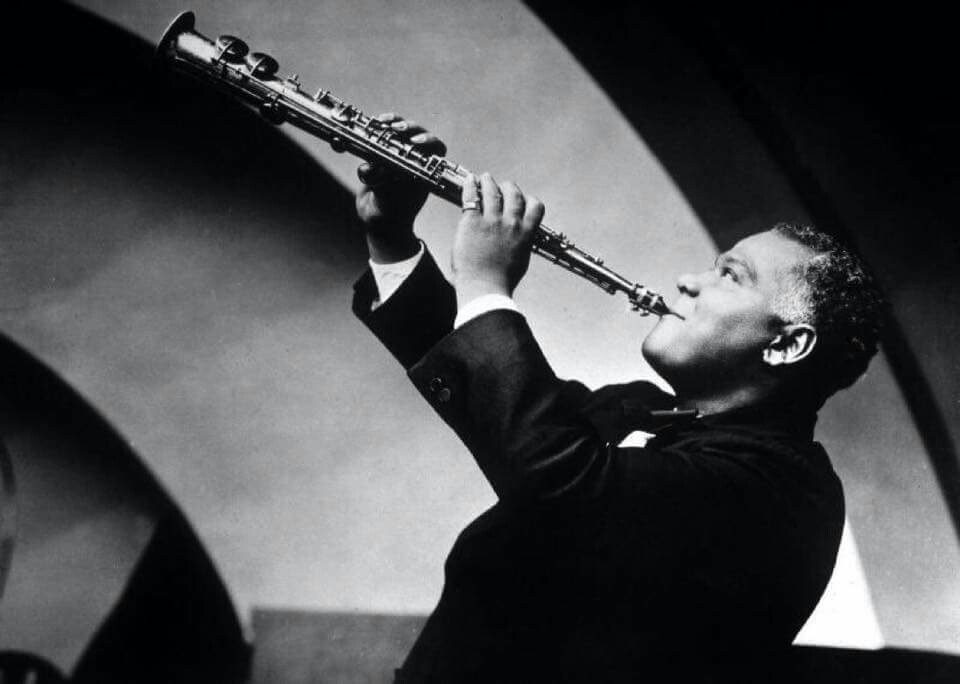Our Methodology

This research group chose to study Jelly Roll Morton, Buddy Bolden, Sidney Bechet, and Joe “King” Oliver because they were cited in prior academic writing as some of the pioneering voices in early jazz1. More importantly, they also served as a foundation for future artists like Louis Armstrong and Ella Fitzgerald to build upon. As gigging musicians and band members, Bolden and Bechet did not read sheet music; Bechet was notoriously stubborn about not reading music, which often forced the bandleaders who hired him to compromise on their arrangements. Both improvised melodies by ear and played them on their respective instruments. Their use of improvisation makes Bechet and Bolden central figures to focus on in jazz history since improvisation is a pivotal component of the genre. The overlap between Buddy Bolden and Louis Armstrong at the Fisk School in New Orleans also shows the incredible breadth of jazz talent concentrated in the New Orleans area in the early 1900s. Many other jazz artists, such as King Oliver, claimed to be directly influenced by Bolden’s playing, improvisation, and musicianship (Marquis). Jelly Roll Morton was also apparently influenced by Bolden as Morton released a recording of a song in 1939 named “Buddy Bolden’s Blues (I Thot I Heard Buddy Bolden Say)”. King Oliver and Jelly Roll Morton represent artists who used sheet music in their work as composers and bandleaders; Jelly Roll Morton wrote several of his piano compositions down and sold copies of them, and King Oliver used charts to help lead his band. In totality, the four artists we focused on represent the different ways in which jazz was growing and the genre was being played.
We relied on a number of sources— some more credible than others— to learn about these musicians’ lives and careers. Both physical books checked out from the St. Olaf College and Carleton College music libraries and internet sources were used to gather information about the artists. For a better insight into our research process, you can click here to see our bibliography and click here to see our data.
One main issue we came across while researching Morton, Bolden, Bechet, and Oliver was the lack of primary source documentation. We spent several hours searching as many different databases for information. Most of the news articles and advertisments we found in hopes of finding data came from the latter half of the 1900s, which is outside the confines of this project. Buddy Bolden proved to be especially difficult to find information on due to the lack of records on his life and music. New Orleans historian James Karst writes a lot about this issue in his articles. As the title of Karst’s article “Buddy Bolden, the Father of Jazz, Left No Known Recorded Music, but His Home Still Stands in Central City” suggests, there is no recorded music by Buddy Bolden. Some members of his band recalled occasionally recording music on wax cylinders, but none of these recordings have survived. Furthermore, this article states that there is only a single known picture of the jazz star. Even the plot where Bolden was buried remains unknown. Karst uses uncertain language in his article that signifies to readers that not much is known about Bolden’s childhood, either: “He undoubtedly witnessed brass bands parading through the streets from the time he was a child. He probably went to the Fisk School, and may have even graduated. At some point, he began taking music lessons on the cornet,” (Karst). The lost history of Buddy Bolden also seems to manifest in Danny Barker’s aforementioned book. While the first chapter is about Buddy Bolden, the rest of the book focuses on other jazz musicians in the Storyville New Orleans area. The majority of the information we found was through biographies, most of which had either consulted the respective artists or found interviews of them and based their writing off of it.
While our data lacks the specificity that comes with primary source data, we feel our data serves our project’s intended purpose, as it shows the movement of each musician and the general trends in when, what, why, and where they were going. We also acknowledge the lack of images, recordings, and media embedded into the maps; our group felt this would be highly disingenuous of our data, as we were not able to find what tunes were played at each performance. Assuming that this information is documented, it would likely give us very limited information due to the performance practices surrounding Jazz. If we were to continue working on this project, this would be an avenue for further research.